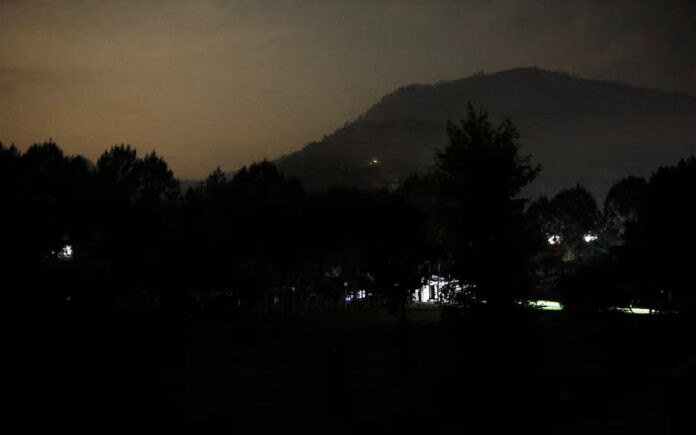Muzaffarabad/News Delhi: In the most intense escalation between India and Pakistan in over two decades, Indian forces launched strikes on multiple sites in Pakistan and Pakistan-administered Kashmir early Wednesday. In response, Islamabad claimed to have shot down five Indian fighter jets, marking a dangerous turn in tensions between the nuclear-armed rivals.
India stated it targeted nine “terrorist infrastructure” sites, many allegedly linked to Jaish-e-Mohammed and Lashkar-e-Taiba—groups India holds responsible for the April 22 attack that killed 26 Hindu tourists in Indian-administered Kashmir. Pakistan, however, reported six locations were hit, denied any militant activity there, and said eight people were killed in the strikes.
An Indian defense ministry statement emphasized that “India has demonstrated considerable restraint in selection of targets and method of execution.” A defense source told Reuters that among the targets were the headquarters of Jaish-e-Mohammed and Lashkar-e-Taiba.
In retaliation, Pakistan’s military reported that Indian missiles struck three sites and claimed it downed five Indian jets—a claim not confirmed by New Delhi. However, four local sources in Indian Kashmir told Reuters that three Indian jets crashed in separate areas, with all pilots hospitalized. India’s defense ministry has not officially confirmed this.
Images circulating on local media showed large metal debris scattered across fields, though Reuters could not verify the visuals independently.
“All of these engagements have been done as a defensive measure,” said Pakistan military spokesperson Ahmed Sharif Chaudhry. “Pakistan remains a very responsible state. However, we will take all the steps necessary for defending the honour, integrity and sovereignty of Pakistan, at all cost.”
Pakistan denounced the Indian attack as a “blatant act of war” and informed the UN Security Council of its right to respond appropriately.
Clashes Along the Border
Simultaneous with the aerial conflict, fierce artillery exchanges and gunfire erupted across the Line of Control (LoC) in Kashmir. Police and witnesses reported intense shelling across the de facto border.
The disputed Himalayan region has been a flashpoint since 1947, with both countries claiming it in full but governing separate parts. They have fought three wars—two directly over Kashmir.
Since a 2003 ceasefire, recommitted to in 2021, cross-border strikes have been rare, especially Indian operations outside Pakistani-controlled Kashmir. However, analysts believe the latest operation, codenamed Operation Sindoor—named after the red vermilion powder Hindu women wear as a marital symbol—signals a significant escalation.
International Response
U.S. President Donald Trump called the fighting “a shame” and expressed hope for a swift end. UN Secretary-General António Guterres called for “maximum military restraint” from both sides.
A Pakistani military spokesperson said Indian strikes killed eight and wounded 35, while two people were missing. Meanwhile, Pakistani shelling across the LoC reportedly killed seven civilians and injured 35 in Indian Kashmir.
In Muzaffarabad, capital of Pakistani-administered Kashmir, damage from the strikes was visible at dawn. A mosque with a collapsed minaret was surrounded by security forces, and residents described scenes of panic.
Schools in Pakistani Kashmir, Islamabad, parts of Indian Kashmir, and Punjab province were shut down. In Forward Kahuta, two men were killed and several women and children injured when mortars hit a home, said district official Imran Shaheen.
Also Read | Trump Labels India-Pakistan Escalation ‘A Shame’, Rubio Works Diplomatic Channels
Pakistan’s Prime Minister Shehbaz Sharif confirmed a response was underway but did not elaborate. Punjab province declared an emergency, with hospitals and emergency services placed on alert.
Two mosques were among the sites struck by India, according to a Pakistani military spokesperson. The defense minister told Geo News that “all the sites were civilian” and not militant camps, calling India’s claim “false.”
Following the operation, the Indian Army posted on X: “Justice is served.”
Economic and Aviation Impact
The Indian Embassy in Washington reiterated that evidence from the April 22 attack “pointed towards the clear involvement of Pakistan-based terrorists,” although it did not detail the evidence. Pakistan firmly denied any involvement.
Markets reacted cautiously. Indian stock futures dipped slightly, with the GIFT NIFTY trading 0.3% below the NIFTY 50’s Tuesday close.
Several airlines, including IndiGo, Air India, and Qatar Airways, canceled or rerouted flights due to airspace restrictions over parts of India and Pakistan.
India’s National Security Adviser Ajit Doval spoke with U.S. Secretary of State Marco Rubio, and senior Indian officials also briefed counterparts in the UK, Russia, Saudi Arabia, and the UAE.
Also Read | Decades of Discord: Major Flashpoints in India-Pakistan Relations
This strike marks one of India’s most expansive military operations since its 2019 airstrike in Balakot following the Pulwama attack that killed 40 Indian paramilitary personnel.
Michael Kugelman, a South Asia expert at the Wilson Center, noted: “Given the scale of the Indian strike, which was far greater than what we saw in 2019, we can expect a sizable Pakistani response.” He added, “All eyes will be on India’s next move. We’ve had a strike and a counter-strike, and what comes next will be the strongest indication of just how serious a crisis this could become.”



